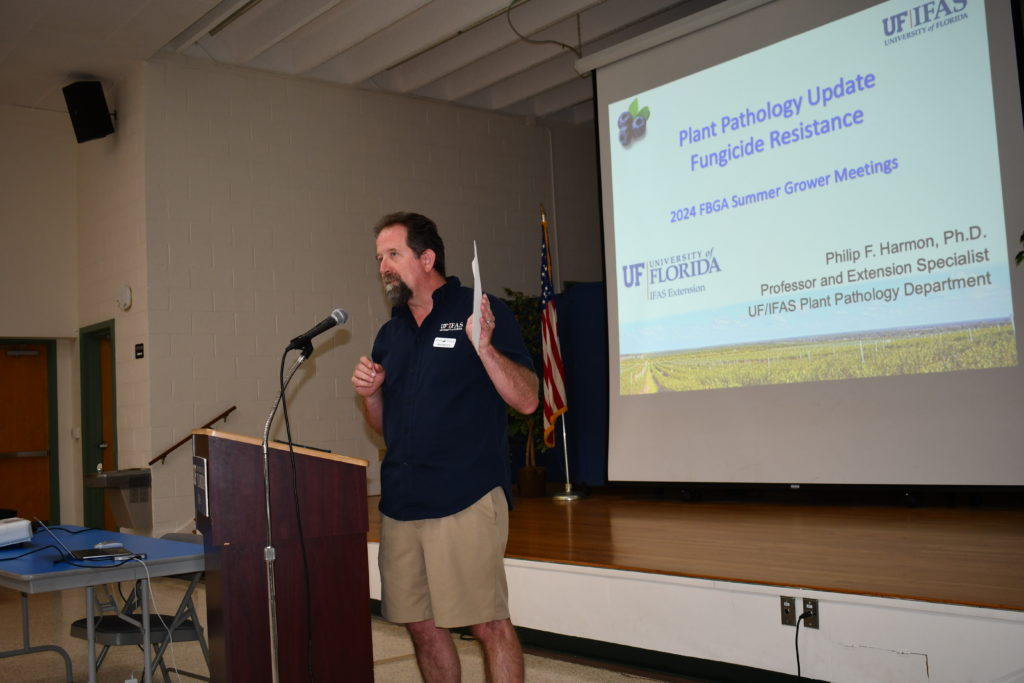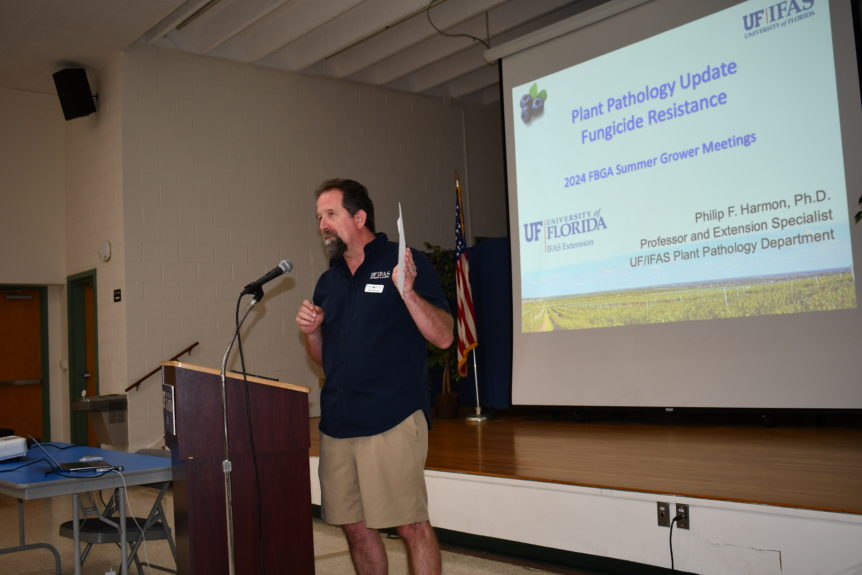
Photo by Frank Giles
By Frank Giles
The Florida Blueberry Growers Association (FBGA) and the University of Florida Institute of Food and Agricultural Sciences (UF/IFAS) hit the road in July to host a series of meetings in key blueberry-growing regions of the state.
MANAGE RESISTANCE
UF/IFAS researchers covered several production topics during the meetings. Phil Harmon, professor of plant pathology, spoke about disease management in blueberries. One of his key messages was the importance of resistance management. The is particularly crucial for fludioxonil, which is the main active ingredient in Switch fungicide.
Resistance to fludioxonil has been confirmed in Georgia, and there was a scare in Florida this past season that ended up not being confirmed as resistance.
“We don’t know for sure that we have fludioxonil resistance in Florida, but we don’t want it for sure,” Harmon said. “This is what we use to treat anthracnose ripe rot.”
Harmon said rotation of fungicides is critical to manage against resistance. He reminded growers about using the Insecticide Resistance Action Committee (IRAC) mode of action groups to help guide rotation decisions. Care should be taken to avoid multiple applications of fungicides in the same IRAC group.
NEW DISEASE LURKING
Angular leaf spot (Gloeocercospora) made an appearance in 2022 and has been popping up in plantings of one the newest popular UF/IFAS blueberry varieties — Sentinel. Harmon said so far, the fungus has not created major problems or impacts on yields, but it is a disease to keep an eye on.
“This is a disease that we’ve not really seen in 40 years. We are not sure where it came from,” Harmon said. “It has probably been hanging around all these years but has just now found a variety it likes in Sentinel.”
The fungicides growers are typically using for ripe rot and leaf rust do not seem to be all that active against angular leaf spot. Harmon said UF/IFAS might adjust treatment recommendations for leaf spot going forward if it continues to be problematic.










